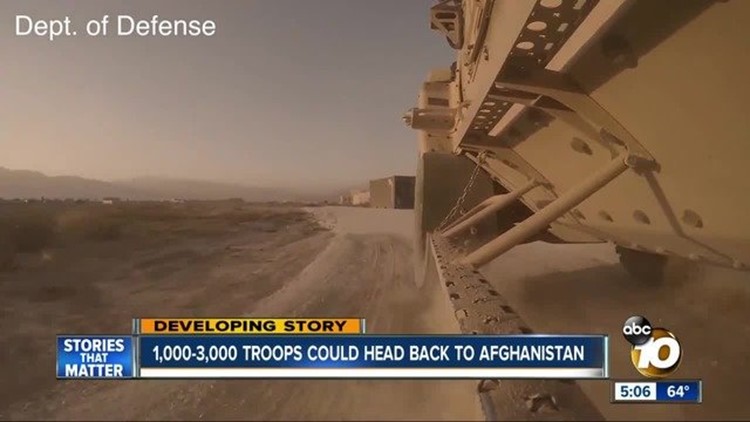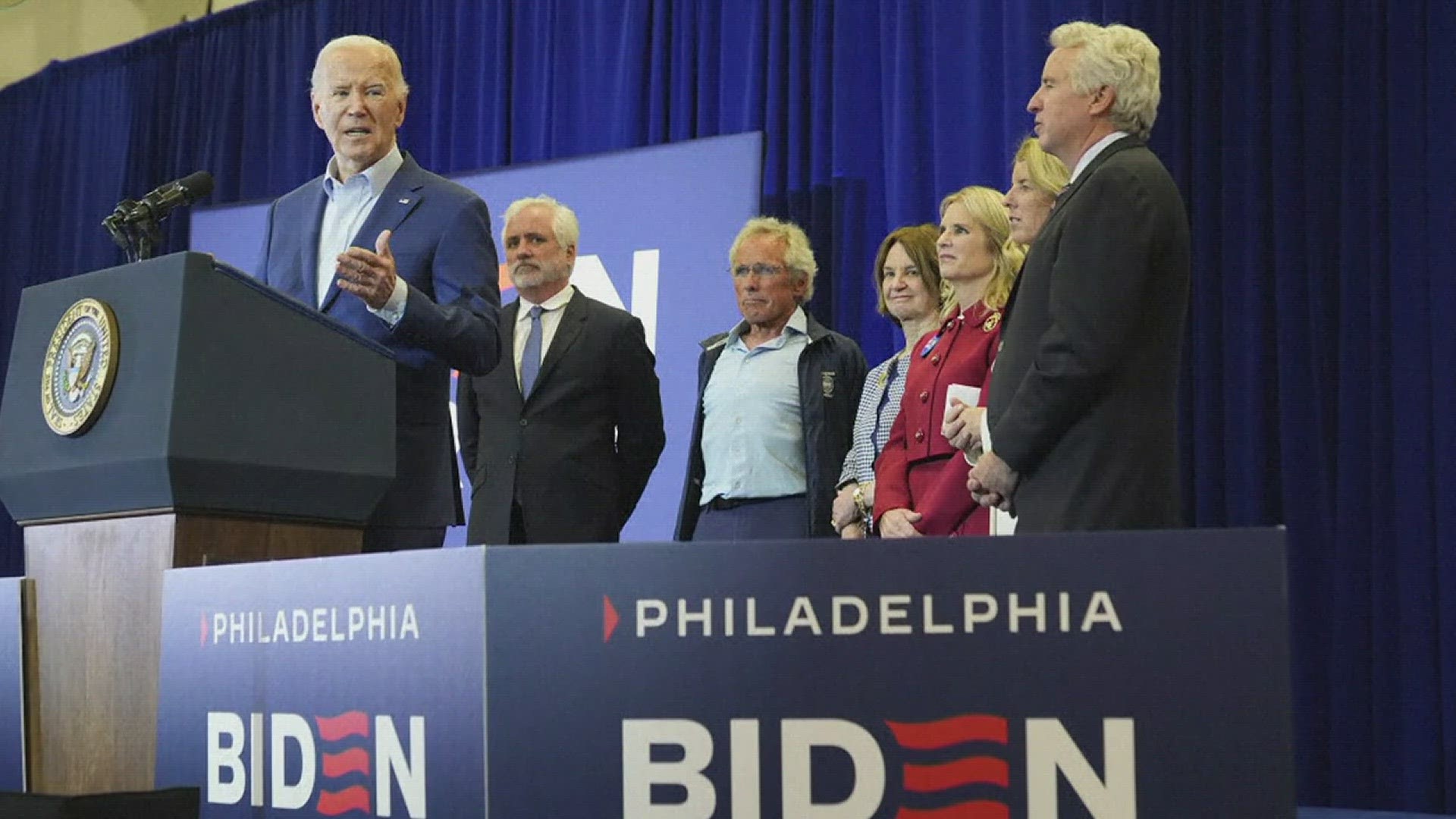WASHINGTON (CNN) — President Donald Trump, who as a candidate lamented the United States’ long-term involvement in Afghanistan and vowed to put an end to “nation-building,” may end up expanding the American military footprint in the country.
Trump’s top national security advisers are preparing to advise him to deploy an additional 3,000 to 5,000 troops, bolstering the commitment in a country where the US has repeatedly sought — and struggled — to wind down its 16-year military presence.
Should he heed that advice, Trump would be sending the second signal in as many months that he is wavering on his commitment to radically alter the direction of US foreign policy and diminish the United States’ direct involvement in conflicts around the globe.
In April, Trump authorized a missile strike against a Syrian government air base after the regime allegedly used chemical weapons on civilians. The unprecedented use of force came despite his arguing against such action during the campaign.
The debate that took place inside the West Wing in the lead-up to Trump’s decision to approve that barrage against the Syrian base is now playing out again inside the West Wing. Trump’s top advisers are vying to sway the President by playing to his competing instincts: on the one hand, his non-interventionist and “America First” worldview and, on the other, his desire to crush terrorists with bold military action.
Trying to notch a ‘win’ in Afghanistan
Trump’s official national security team is lining up behind the proposal, with national security adviser H.R. McMaster and Defense Secretary James Mattis firmly behind boosting troop levels, a source familiar with the discussions told CNN.
The primary opposition has come from Steve Bannon, the president’s chief strategist and fierce guardian of Trump’s campaign promises, a former naval officer who like Trump has long disparaged the United States’ endless wars in the Middle East.
But Bannon’s influence may be limited in the wake of his removal from the National Security Council’s principals committee, which left the political aide without a permanent seat at the table where the most serious national security matters are debated.
White House press secretary Sean Spicer signaled twice this week that Trump has directed his advisers to formulate a strategy to “win” in Afghanistan and defeat terrorist groups there. And he insisted a decision to increase troop levels wouldn’t mark a break with Trump’s campaign rhetoric.
“His priorities remain the same, but he’s going to do what he can to make sure that he protects the country and our people and the threats that face the United States,” Spicer said. “That’s one thing that he was also very clear on in the campaign, that as president he is going to do everything he can to defeat radical Islamic terrorism.”
A debate over nation-building
Though neither Trump nor his Democratic opponent, Hillary Clinton, discussed the war in Afghanistan at length during the general election, Trump in October 2015 expressed his aversion to the long-term presence of troops in the country.
“Are they going to be there for the next 200 years? You know, at some point, what’s going on?” Trump said in an interview on CNN after then-President Barack Obama announced the United States would keep thousands of US troops in Afghanistan past a deadline his administration had previously set.
In the same interview, Trump also called the war in Afghanistan a “mistake” — just as he had described the Iraq War — though he later walked back that comment, insisting he was referring only to Iraq.
Later, however, he criticized Obama’s decision not to leave a residual US force in Iraq after his 2011 withdrawal, which Trump argued allowed for the rise of ISIS.
But Trump made clear during the campaign that he was looking to break with the internationalist-minded foreign policies of successive Republican and Democratic administrations.
Trump railed not only against the Iraq War but also the US’ Libyan intervention, lamenting the billions of dollars the country had spent trying to bring about regime change in the Arab world. In August, he declared his presidency would bring an end to the US’s “nation-building” policies — instead, focusing only on destroying terrorist groups like ISIS.
“Our current strategy of nation-building and regime change is a proven failure,” Trump said then. “If I become president, the era of nation-building will be ended. Our new approach, which must be shared by both parties in America, by our allies overseas and by our friends in the Middle East, must be to halt the spread of radical Islam.”
Obama, too, came into office after railing against endless wars in the Middle East and arguing for bringing the wars to a close. But just as Trump has had to confront global realities, Obama in his first year in office approved a 30,000-troop surge in Afghanistan.
Trump now must decide whether he will draw the United States further into the war there, and in doing so double down on strategies that he has disparaged — and that have so far not ended the terror threat.
Spicer insisted the United States could accomplish more with less.
“Just because you spend more, throw more people, doesn’t mean you’re doing it in the most effective way,” Spicer said.
While Trump weighs his options, he is now largely relying on the same military professionals who helped craft the US military strategy in those countries.
Trump tapped retired generals to head the Department of Defense and Department of Homeland Security. His National Security Council is also led by two military professionals: McMaster and NSC chief of staff Keith Kellogg, a retired lieutenant general. All played command roles in Iraq and Afghanistan.
The troop increases Trump is considering at this point would represent an increased US role in the country. But it would not necessarily be a fundamental shift in strategy, rather a small tactical shift to bolster the US efforts to train, advise and assist Afghan forces.
The US is clearly, however, eyeing an overall redoubling of the US and NATO allies’ efforts in Afghanistan, where the US now faces not only the task of helping Afghan forces repel the Taliban but also of quashing an insurgent ISIS cell that has established a foothold.
Mattis, the defense secretary, wrote to NATO’s leadership and member countries to suggest a potential increased commitment to the country, where about 6,000 non-US NATO troops are part of the advise and assist mission that also includes 8,400 US troops.
Compromise on troop levels may be in works
Michael O’Hanlon, a senior fellow at the Brookings Institution and expert on US policy in Afghanistan, said the moderate increase in troops could help bolster the US advisory mission in Afghanistan, particularly in Afghanistan’s Helmand province, where Afghan troops have encountered fierce Taliban resistance. O’Hanlon said the increase could allow the US to send more troops to advise units in the field, which he said the US currently has a “limited ability” to do.
“If we choose carefully and strategically, that could be a real boon,” he said.
Still, if Trump’s goal is to defeat the Taliban and terrorist cells in Afghanistan, the increase may not be sufficient to accomplishing the goal — potentially lengthening the US military presence in Afghanistan without achieving significant gains that would either eradicate the Taliban or convince the rebel group to agree to a negotiated peace. And that in turn could lead to more decisions like the one he faces now.
If Trump agrees to the modest increase in troops, it may be a compromise between the larger troop commitment some in the Pentagon would like to see and Trump’s reticence to recommit large troop numbers to the fight in Afghanistan just as the US has been trying to wind down its involvement there.
Even as Trump lamented the continued US military presence in Afghanistan in the October 2015 interview, he acknowledged the difficulty of devising an exit strategy.
“It’s a mess. It’s a mess. And at this point, you probably have to (stay) because that thing will collapse about two seconds after they (US troops) leave,” Trump said.



